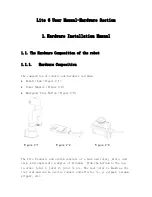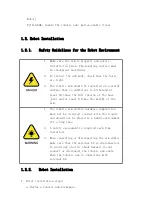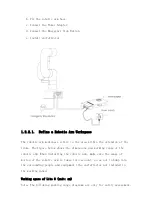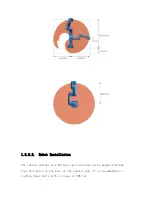
Terms and Definitions
The following terms and definitions apply to this manual.
End Effector
The end effector, installed on the front end of the wrist of the
robotic arm, is used to install special tools (such as grippers,
vacuum gripper, etc.), which can directly perform work tasks.
Enable Robotic Arm
Power on the robotic arm and turn on the motor of the robotic
arm. After the robotic arm is enabled, it can start to move
normally.
TCP
Tool center point.
TCP Motion
TCP motion is the Cartesian space motion, with target position
in Cartesian space coordinate and the end follows the specified
trajectory (arc, line, etc.).
TCP Payload
(End Payload)
The payload weight refers to the actual (end tool +other object)
weight in Kg; the X / Y / Z-axis indicates the position of the
center of mass of the TCP relative to the default tool
coordinate system, with unit of mm.
TCP Offset
(Tool Center Point
Offset)
Set the relative offset between the default tool coordinate
system at flange center and the actual tool coordinate system,
with distance unit of mm.
Roll/Pitch/Yaw
Roll / Pitch / Yaw sequentially rotates around the X / Y / Z of
the selected coordinate system (base coordinate system).
The following describes the roll/pitch/yaw orientation
representation of {B} relative to {A}:
For example, the coordinate system {B} and a known reference
coordinate system {A} are first superposed. First rotate {B}
around
A
X
ˆ
by γ, then around
A
Y
ˆ
by β, and finally around
A
Z
ˆ
by α.
Each rotation is around a fixed axis of the reference coordinate
system {A}. This method is called the XYZ fixed angle coordinate
system, and sometimes they are defined as the roll angle, pitch
angle, and yaw angle.
The above description is shown in the following figure:




































